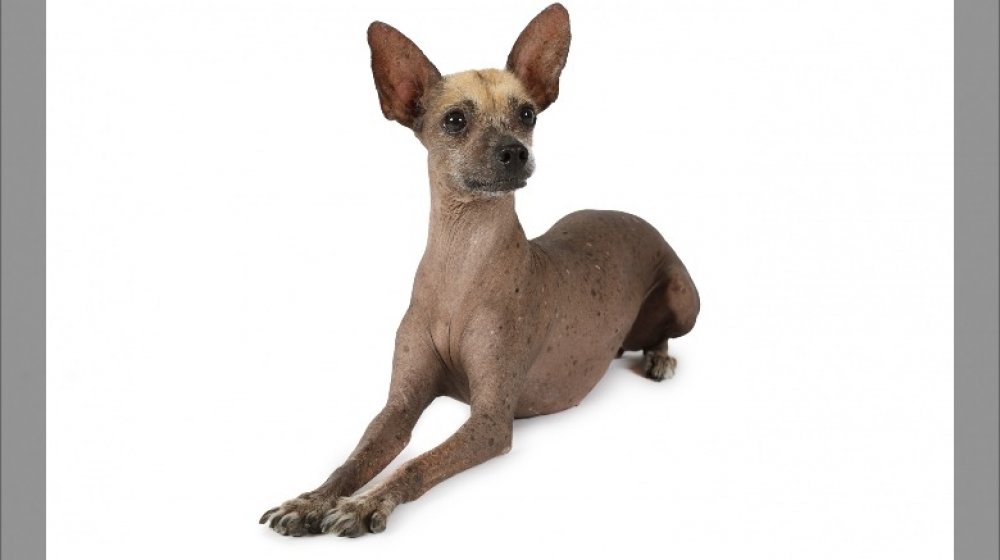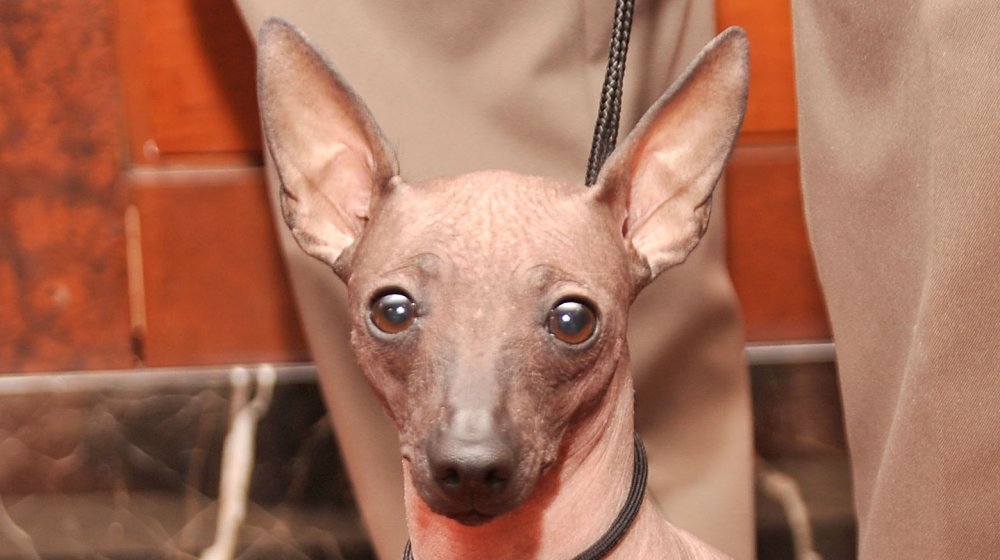What You Need To Know About Mexico's Ancient Dog Breed
Everyone knows that Mexico's most famous canines are Chih-wall-walls. Also dubbed "border collars," these diminutive doggies wear spiked handcuffs as collars, are led on chain-linked leashes, and reside on Mexico's northern border with the United States. Presumably, they stem the flow of U.S. citizens and undocumented immigrants crossing the U.S.border into Mexico, which as the Deseret News noted in 2019, was actually greater than the flow of immigrants from Mexico to the U.S. over the previous five years. Wait, sorry, Chih-wall-walls don't exist. That's Chihuahuas, and they only live in rich ladies' purses. But long before five years ago, a different breed of dog not only existed, but fetched Mexico's heart and never let go. That breed is the Xoloitzcuintli.
The way to a country's heart is through its stomach
The Xoloitzcuintli, or Xolo for short, has hair so short that it doesn't exist. Better known as the Mexican hairless, according to OZY, the breed has a history that goes way back and out the backsides of the Aztec kings, who some history buffs believe ate the canines as a delicacy. Per the American Kennel Club, their name derives from the Aztec fire deity Xolo and the Aztec term for dog, "itzcuintli." Xolos might have also been eaten like hot dogs by 16th-century Mexicans. A tale from that time tells of a months-long drought that Tlaxcaltec priests tried to combat by having villagers sacrifice and eat hairless dogs.
Xolos may have arrived in Mexico 3,000 years ago, and archaeological evidence points to the possibility that the dogs "accompanied the first humans to cross the Bering Strait, then lived in the jungles of Mexico, where they were prized by ancient cultures." They also surprised Christopher Columbus, who called them "strange, hairless dogs." (Then again, Columbus thought manatees were ugly mermaids, so maybe he's not the best judge of what's normal for an animal.)
Not all Xolos are hairless, but the many that are secrete special oils that protect their skin but can also cause acne. So the AKC recommends giving them regular wipe-downs with a damp cloth in addition to baths. Over-bathing, however, can clog their pores and presumably dampens the flavor of their skin.

